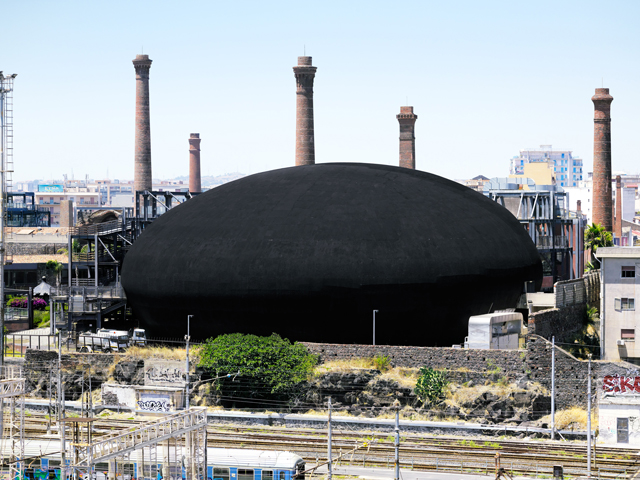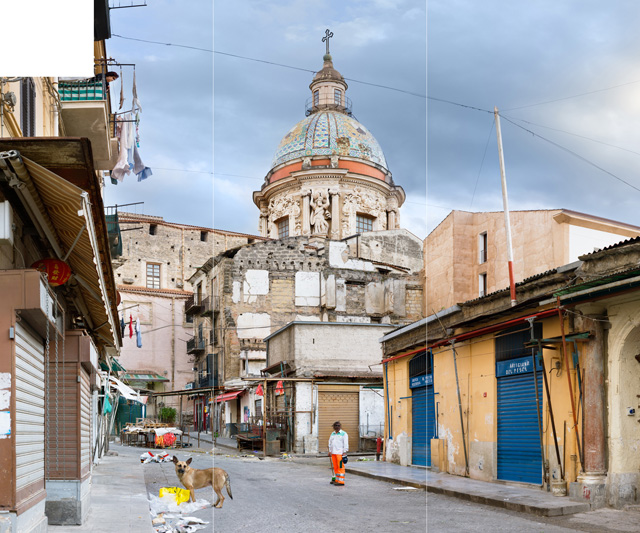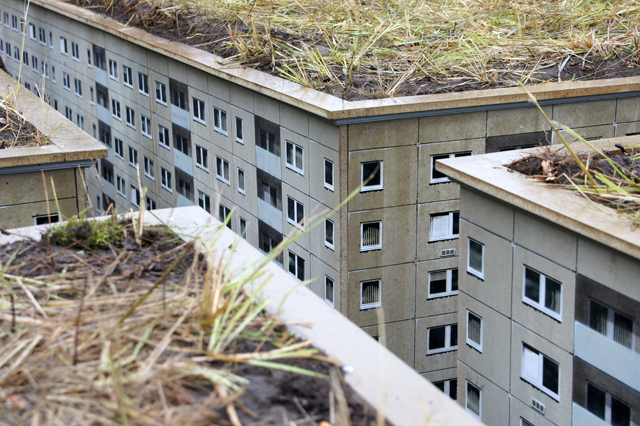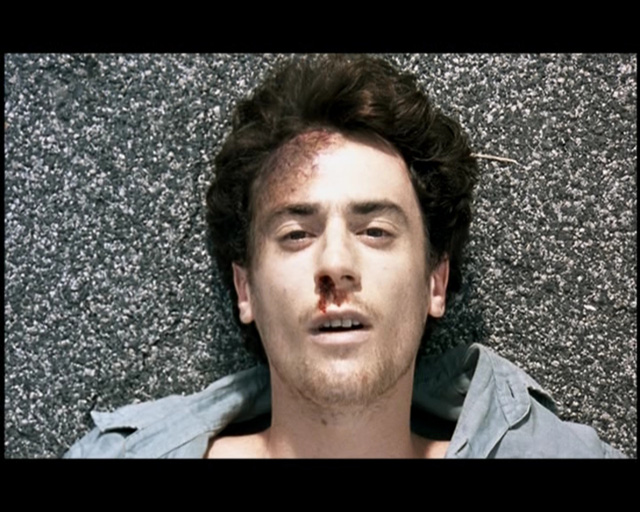RAIDS

text by Cetta Brancato, photography by Olivo Barbieri.
In every human research, the tinsel conceals the truth. The artist knows well, he’s the one who understands the essence of the spirit, embodied in matter, as visionary empty. He also knows that only one sign, can truly express, the more naked and precious silence. When, vice versa, many elements are placed (albeit refined) between man and his essence, we do nothing but put them far away and we tend, indeed, to not tgive a voice, to hinder the expression.
The Baroque, for example, that uses multiple symbols, obsessive in shape and in the endless repetition of them, makes it almost impossibile to reach. It gathers and tricks, tbecoming the full representation of non- being. Of death, ergo. It seems not to be an accident the fact that, in Sicily, place where death is expressed in every representation, the baroque soul has found its fertile humus.
The Sicilian artist wears dress this expressive dress: he’s accustomed todeath and openly represents it. In this way the idea becomes a word, the word – sign, the sign – home, neighborhood, city. And if, as Renzo Piano thinks, architecture is an iceberg – the tiny part that emerges from what is inside, we can believe that the carnal aspect of a city expresses its spiritual character. I always sensed traces of death in Sicily. As Tomasi di Lampedusa told us, even the Patrician houses, the most opulent and rich talk about the dirty linen of the dying and preserve the sense of an ending as a core value of our culture. But the soul landscape seems to no longer embody the urban landscape, because, having forgotten the poetry of existence, we forget to express ourselves through the city. We imagine and create good homes for each identity: boxed wall with no signs of light and ruins.
We also believed, folding into the sterile and savage consumerist individualism, that the “poetic making” was at least screened through the intimate gestures and, therefore, within the house. So having buried both urban and social harmony, therefore deleting the important figure of the architect from crafts, from absence to absence the harmony of lines breaks up and disappears and with it the material sense: the gold of limestone and chestnut, the dense and fantastic ceramic with its colours borrowed from nature, the unexpected turn of imagination, material goods, forgetting al the elements that are lost in the folds of the vital mind.

The uniformity of the resulting tekné remains free, so not fertilizable by the intellectual reality. Not only Art answers this primary need, but every simple gesture as an idea, even the poorest one, uses the construct of existence. The bones of the city risk to loose permanently their elasticity that allows the urban body to model a route through each single cell: house cell, hospital cell, garden cell, gym cell, graveyard cell, square cell. There’s a line in human history. A soft and harmonic line that tells about the harshness of existence. A line that becomes a network, street, foundation, height even dizziness when it can. Reshaping the poetry on the aridity of barbarism seems the only possibility to redraw it. And if we assume that the representation of death is the cornerstone for the Sicilian culture, then you need to find new codes, styles, signs that translate it in a contemporary key.
Every cultural identity must find the ability to express the present and the future to reach a possible network of signs, even thanks to an industrial craftmanship that won’t forget the wisdom of the hands that breaks the bread nor the creativity of the disobedient fingers of a child. The historic, aerial and invisible line that modern man seems to have broken with the easy technique of pre-fabricated, and ready made generates an aberrant and cemented aesthetics deep into the factual dimension poor of essential human signs. In order to have cities that communicate with man and tell of his needs, it’s necessary to restore the dialogue with the history of his soul, without superstructures and hiding himself, during the difficult and urgent need of the sign.
Related Posts :
Category: Article
Views: 1984 Likes: 0
Tags: artist , Baroque , catania , Cetta Brancato , city , italian , Lampedusa , Mount Etna , olivo barbieri , palermo , photographers , renzo piano , Sicilian Baroque , sicily
Comments:
Info:
Info:
Title: RAIDS
Time: 12 marzo 2012
Category: Article
Views: 1984 Likes: 0
Tags: artist , Baroque , catania , Cetta Brancato , city , italian , Lampedusa , Mount Etna , olivo barbieri , palermo , photographers , renzo piano , Sicilian Baroque , sicily






